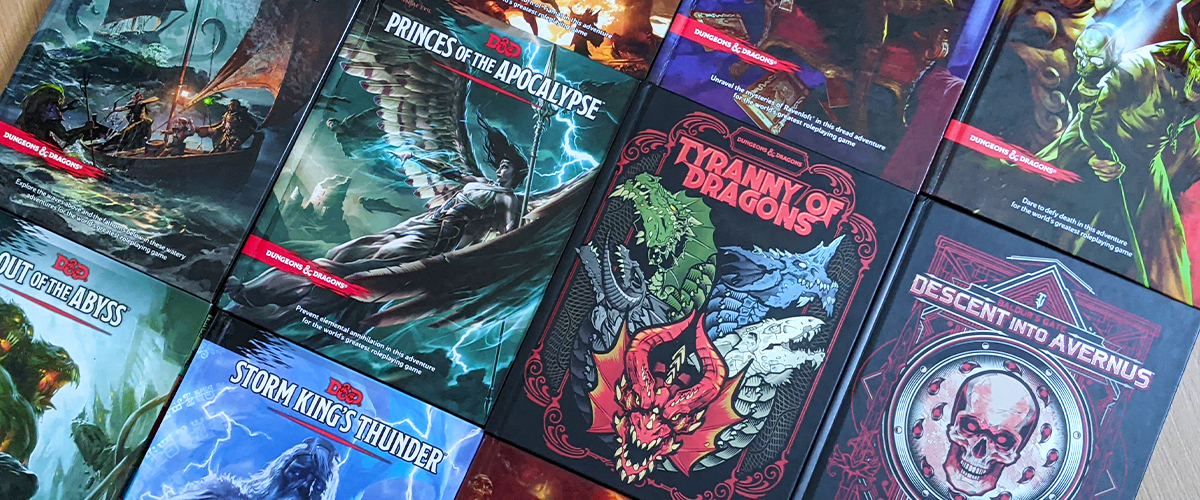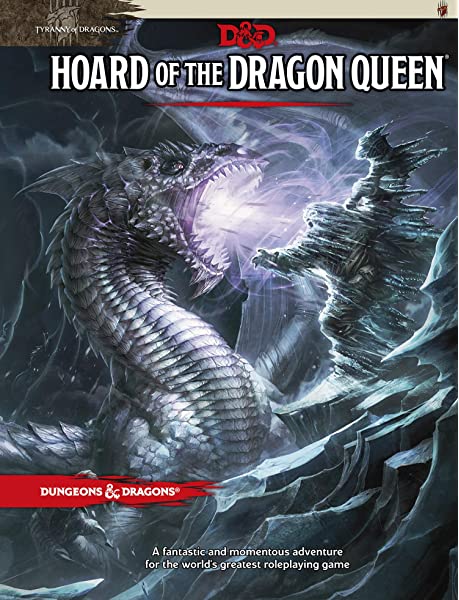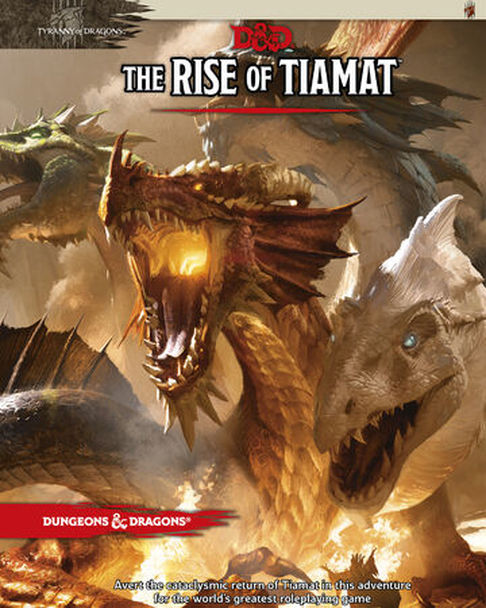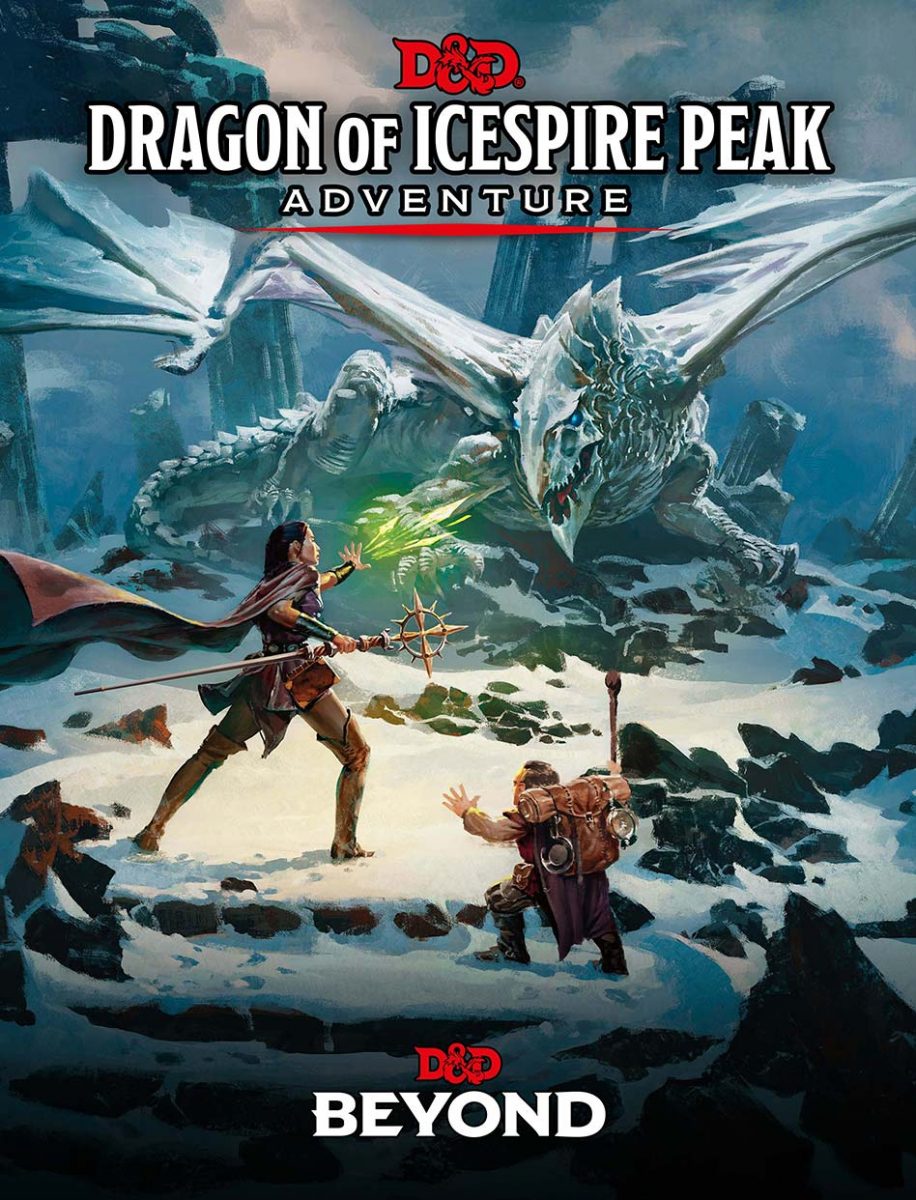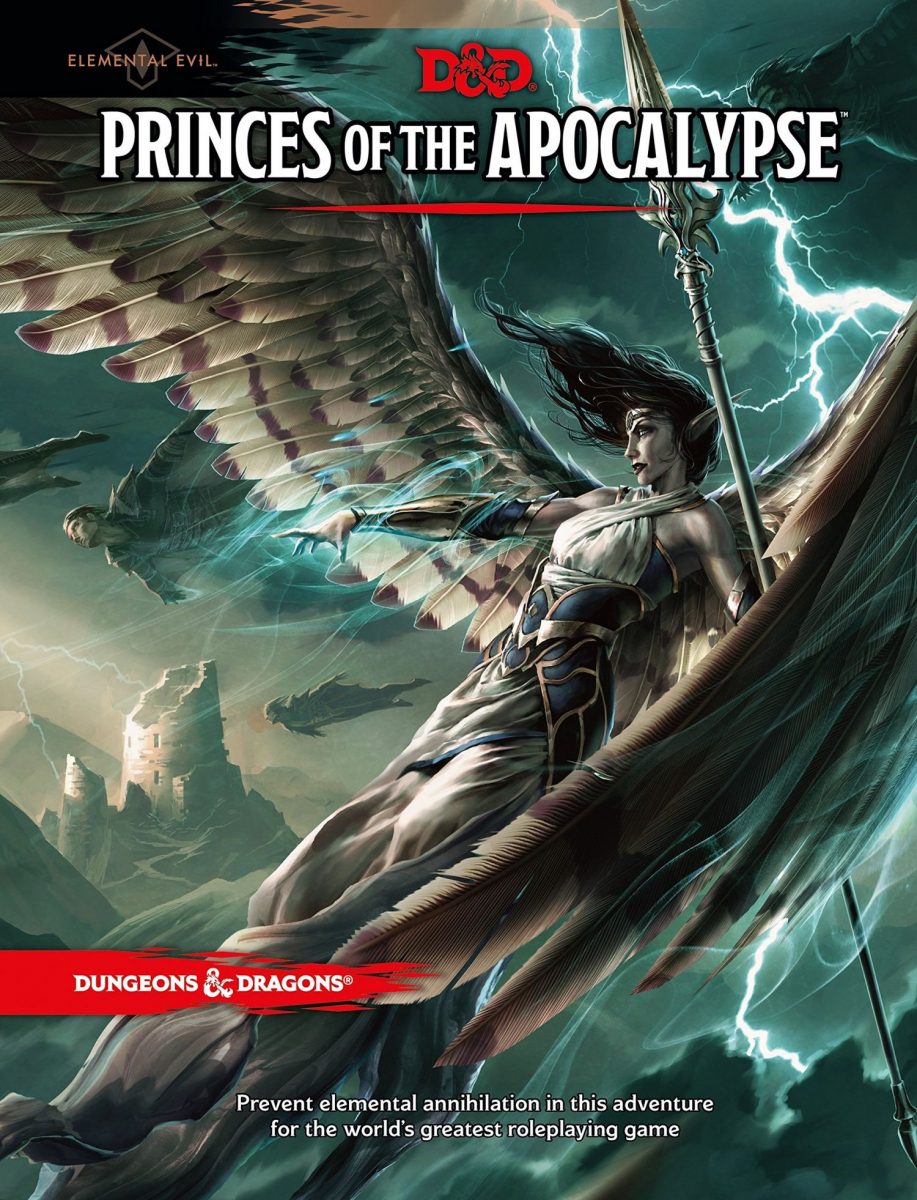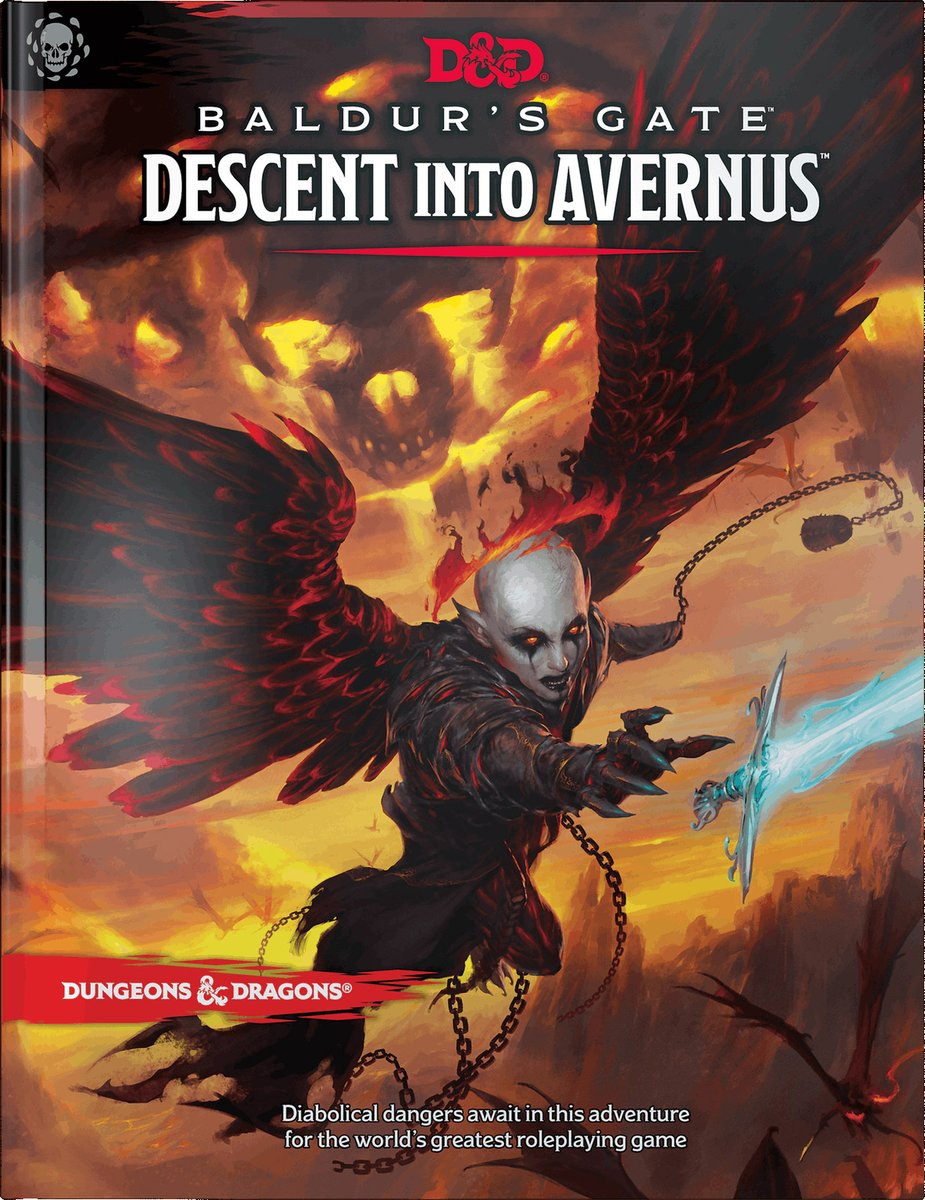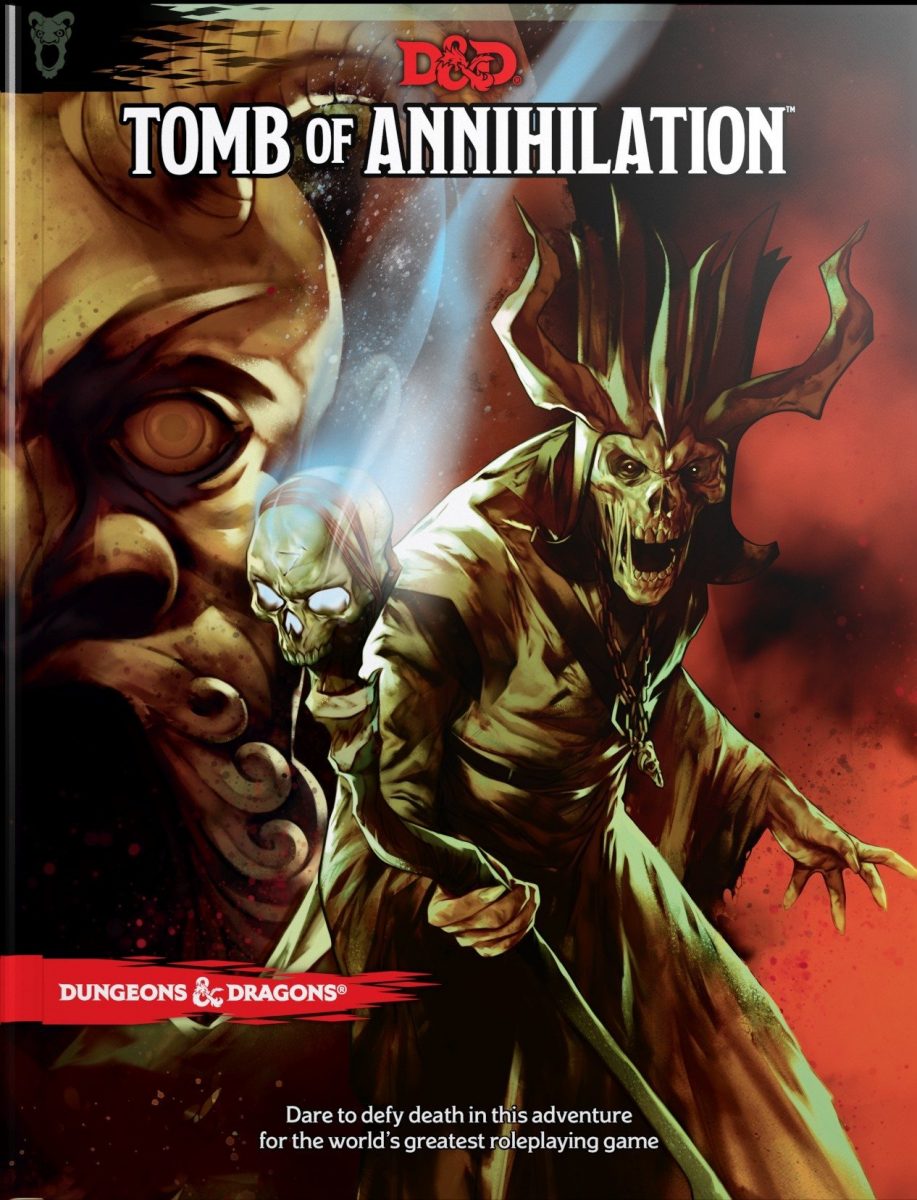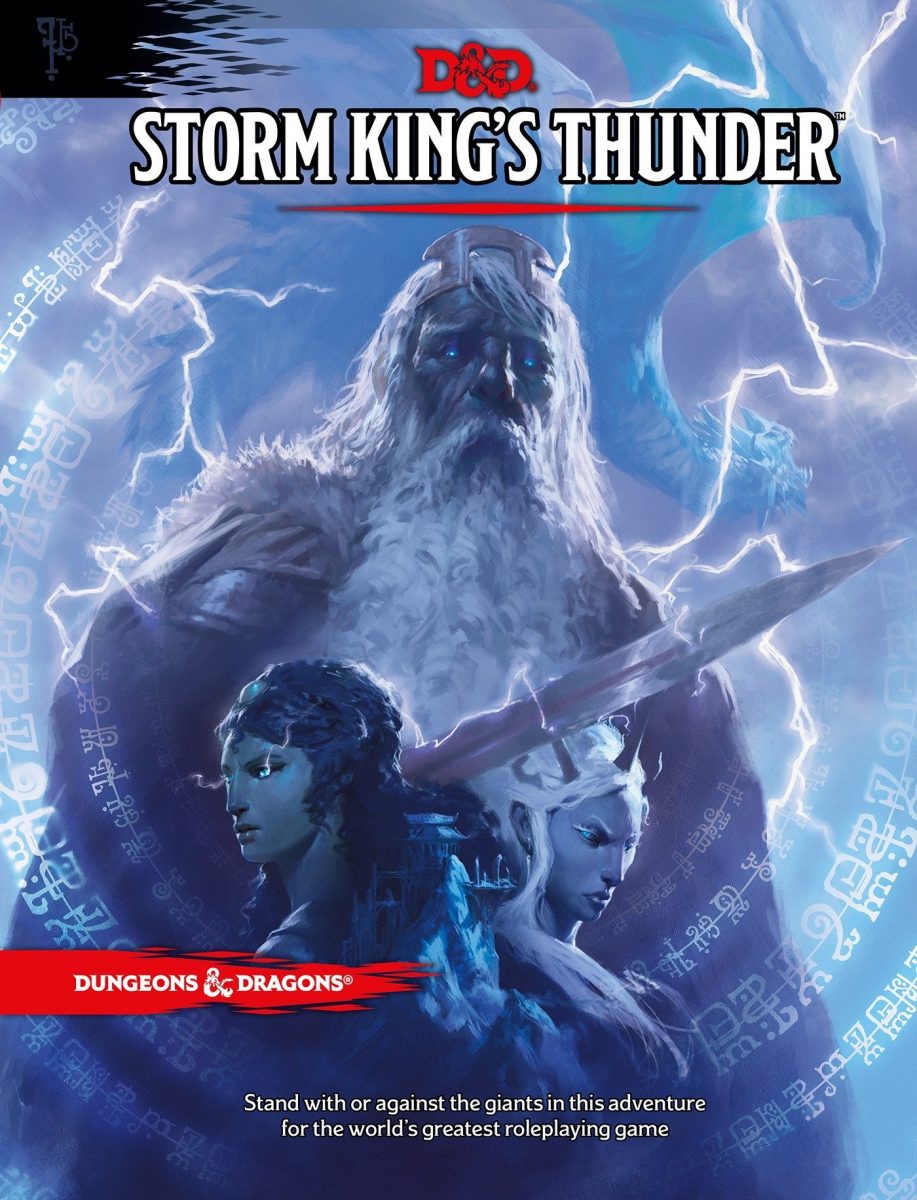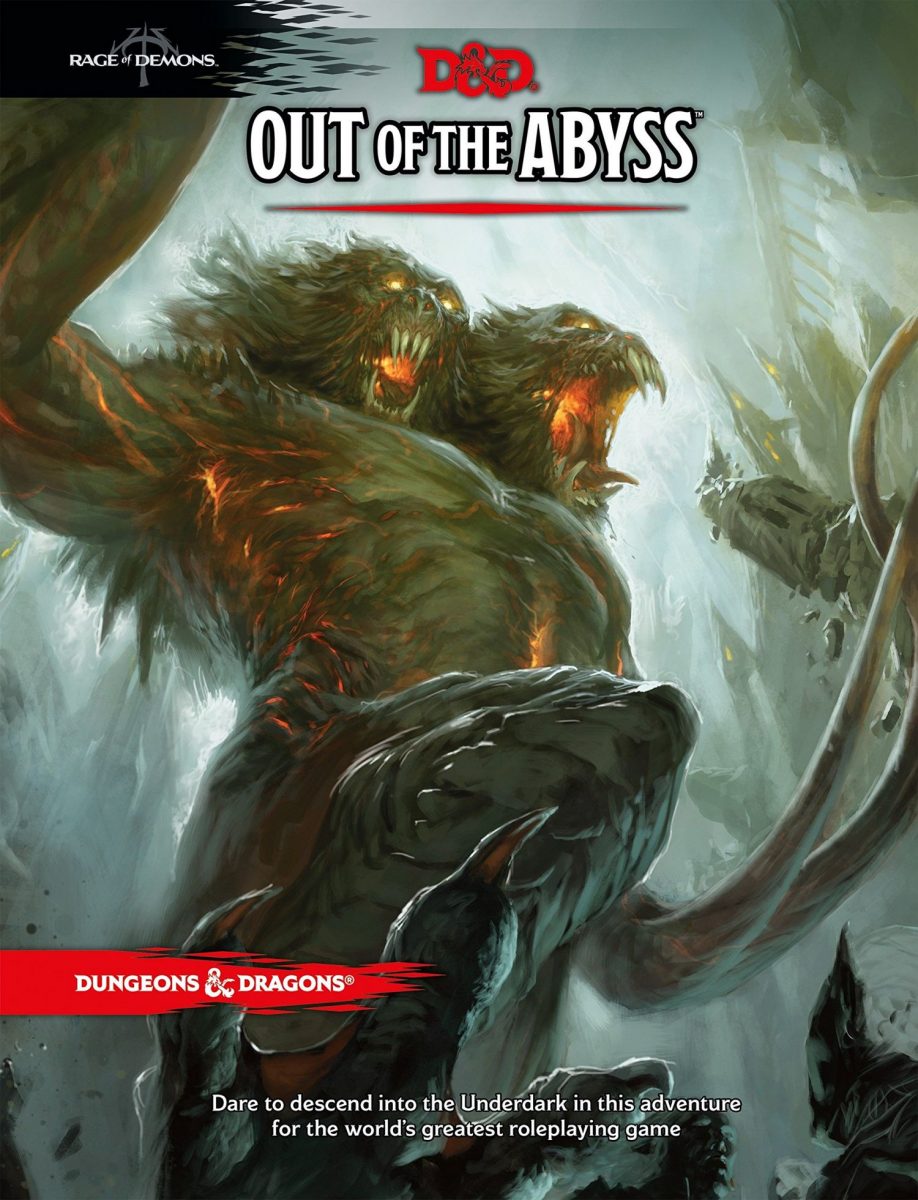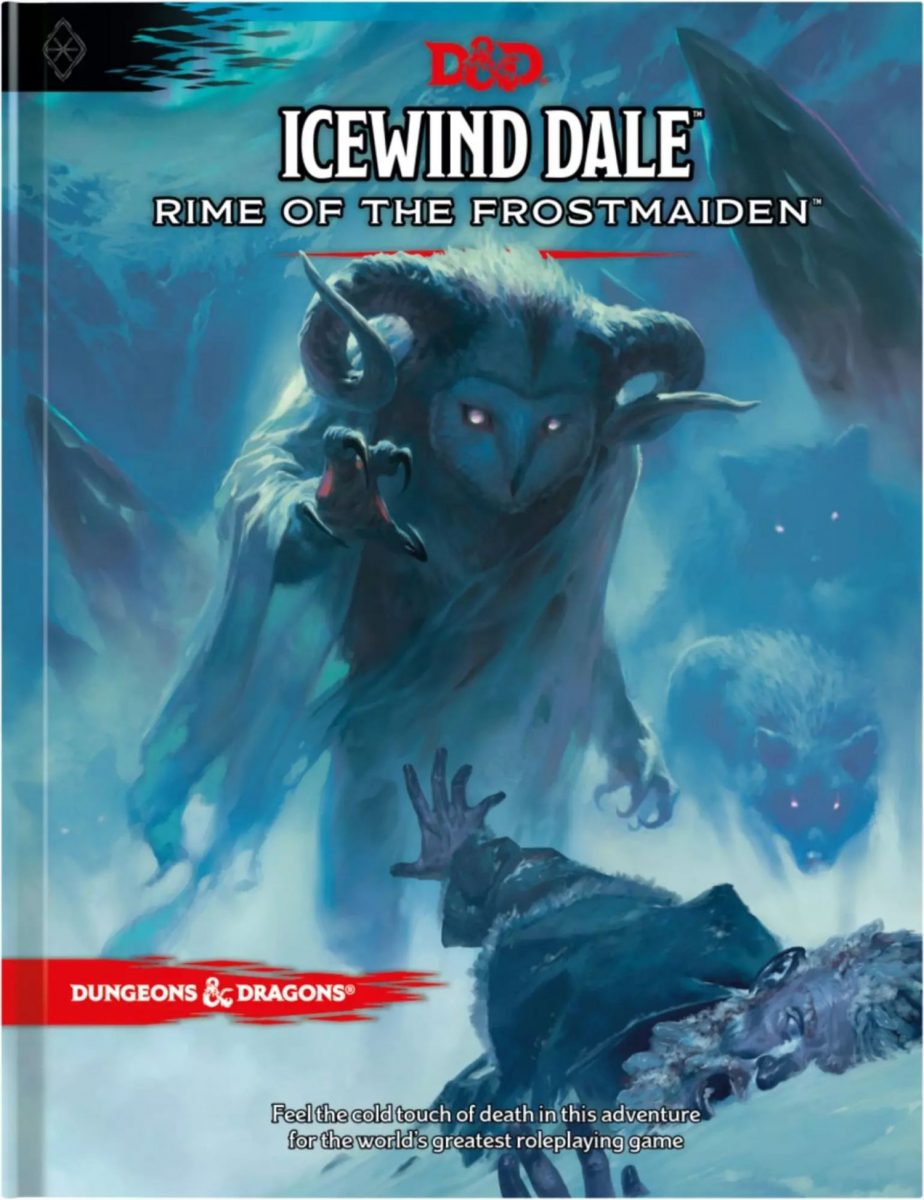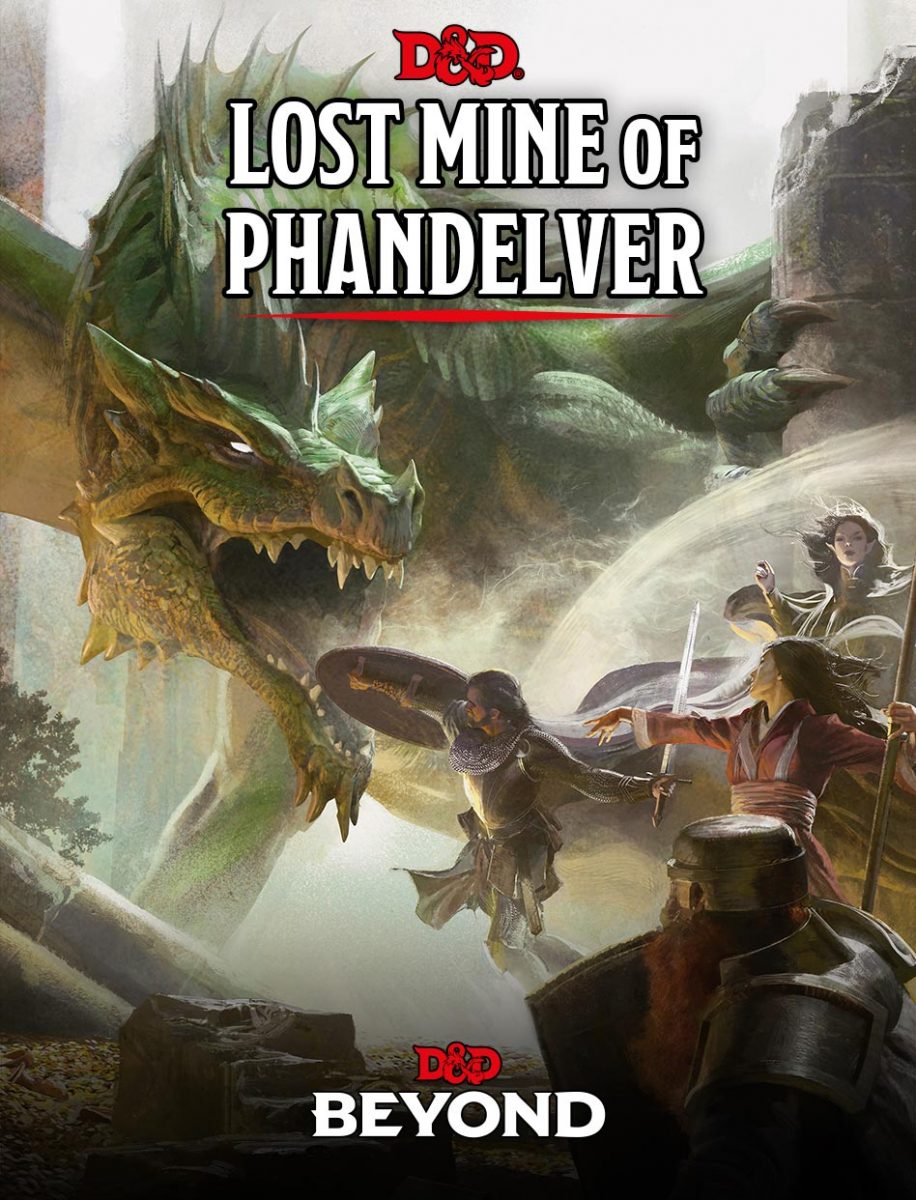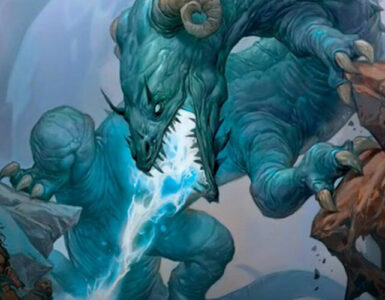DISCLAIMER: This guide is meant for Dungeons & Dragons Dungeon Masters looking to run a new campaign with minor spoilers. Players looking to play in any of these adventures: scroll at your own risk (unless you plan on being a DM next time)!
Dungeons & Dragons is probably enjoying its best years right now. The rise of geek culture (heh) as well as the prominence of streaming has boosted its popularity in recent years. But of course, it probably wouldn’t have been possible without the launch of the game’s 5th edition (5e) back in 2014, which, by far, is the most accessible iteration of the tabletop RPG to date, reeling in a whole new generation of players, and retaining a sizeable number of veterans too.
6 years on, and we are now sitting on top of fourteen official D&D adventures (okay, fifteen if you break up Tyranny of Dragons), with the latest being Rime of the Frostmaiden, at the time of writing. While it’s easy to just pick up the latest adventure and start running it, it might be better to get a second or third opinion of the adventure, especially from those who have played through or run it before.

So to help you out a little bit, we’ve ranked the current D&D 5e adventure modules released by Wizards of the Coast so far, based on my own experiences of each campaign. While this guide is by no means definitive, it should give you an idea of what to expect for each module before you embark on one. Do note that just because an adventure is ranked lower, doesn’t mean it is objectively bad, though some design choices might be great in theory but a little clunky in practice.
Ultimately, your mileage may vary for each campaign, so feel free to take on any storyline that suits you and your group’s liking!
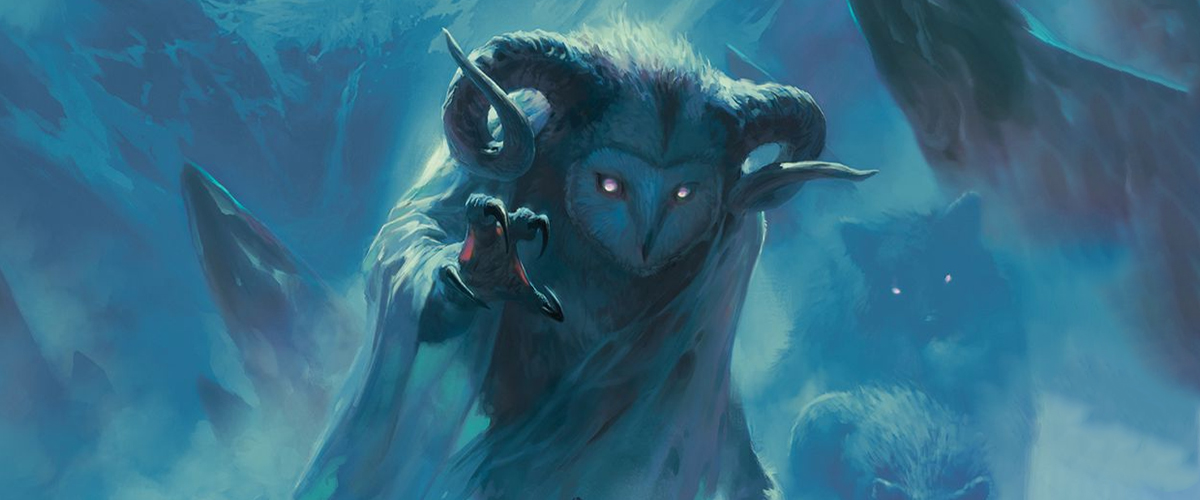
Also, it might help to host a Session 0 for your group to pitch various campaigns just to see which adventure the entire group feels like running together, as it is always better to go through a story with all the players and DM on the same wavelength. No one wants to run a pirate campaign with a group of all pirates and one astronaut.
Without further ado, here is our geek’s guide to the best official Dungeons & Dragons adventures!
#14 – Tyranny of Dragons (consists of Hoard of the Dragon Queen and Rise of Tiamat)
Levels: 1 – 15
Genre(s): Classic Fantasy
Year Published: 2014
Staring at the bottom (very aptly, at that) is the very first hardcover adventure for D&D 5e. Unlike the rest of the modules here, Tyranny of Dragons is actually a two-book storyline, with Hoard of the Dragon Queen serving as the introduction to the conflict with the evil chromatic dragons and their cult, and culminating in Rise of Tiamat. While the premise of banding various factions together in a combined effort to bring down a conclave of evil dragons and their god, the evil Tiamat, in the same vein as Avengers: Endgame, is certainly a tantalising one for many groups, the biggest issue with these two books is that they’re complete railroads on both ends of the table.
Players don’t get much agency in resolving conflicts on their terms, and DMs don’t get to explore different narrative branches or endings. Though Hoard of the Dragon Queen and Rise of Tiamat can be run separately, they are best played one after another as they are literally a continuation of the same storyline.
Even for a group of brand-new players, it’s hard to recommend this adventure because it doesn’t allow for almost any form of narrative agency. It’s a shame given how epic the scale of this storyline is compared to most of the other stories here, as there is a ton of potential for a variety of ways in which groups can approach scenarios. But of course, it would only get better from here on out for WotC’s module quality (albeit with a couple of wobbles in between).
#13 – Dragon of Icespire Peak
Levels: 1 – 5
Genre(s): Exploration, Wilderness, Classic Fantasy
Year Published: 2019
The starter module from the Essentials Kit box set, Dragon of Icespire Peak is geared towards getting a brand-new group of D&D players through, including the DM as well. The premise is pretty simple: a white dragon has been terrorising the local area, and the party is on task to hunt it down. Oh, and there are also a slew of side quests for a little change of pace and the opportunity for extra coin and loot.
Structurally, this adventure is sound, and offers a good bit of player freedom in the ability to take up side quests on the job board in town. This automatically makes it much easier to get players up to speed with the freedom of play in D&D than Tyranny of Dragons. However, it falls flat on its face with the bizarre lack of a proper main quest to track the dragon to its lair and battle it. As written, players have to find a way to track it themselves.
While this in itself wouldn’t be that much of an issue with experienced groups, the fact that this adventure was written for beginner players and DMs (both of whom probably need a bit of hand-holding and prompting from the book itself) makes it a little confusing for newer groups to grasp. It then falls to the DM to make the threat of the dragon more apparent and in turn give players the proper motivation to go and hunt it down, otherwise they’d all be going around in circles in frustration.
#12 – Waterdeep: Dragon Heist
Levels: 1 – 5
Genre(s): Intrigue, Urban
Year Published: 2018
For an adventure book that has “Dragon Heist” in its title, it really only has one of them. Where’s the heist here?! Despite being billed as a module in which groups can act out their Ocean’s Eleven or Inception fantasies, there actually isn’t one. Groups have to do the opposite – stop the heist from happening and uphold the law. This misdirection is a marketing no-no in our books, and is the sole reason why this book ranks this low on our list. Had WotC been more upfront about what this story is all about, then it might not have been too bad.
Otherwise, the content in Waterdeep: Dragon Heist is actually pretty solid. Unlike most other adventures, this one takes place in just one location: Waterdeep. The writing team did a bang-up job bringing the City of Splendours to life, and the excruciating detail really ensures it lives up to its nickname. Also, it’s cool to see how there are essentially four different campaigns in this book, as the majority of the content, such as locales, NPCs and villains, change depending on which of the four seasons groups start the adventure with. That’s big, and is something that will certainly prompt a replay or two just to see how different seasons pan out. But yes, we can unfortunately confirm that not a single heist by the players is present in any of these branching paths, so that’s that.
#11 – Princes of the Apocalypse
Levels: 1 – 15
Genre(s): Dungeon Crawler
Year Published: 2015
Where Tyranny of Dragons attempted to cook up a massive tale that nearly spans the cosmos, WotC’s second book is a dungeon crawler, plain and simple. The premise also complements its simplicity: there are four elemental cults that are wreaking havoc across the land, each with their own individual goal of summoning their elemental deity to wreak even more havoc on a larger scale. Parties then have to venture into each lair, each of which are rather large dungeons, to oust each cult and get some really powerful magic items in the process. It’s really that simple, which makes it fun to play in.
However, like many of WotC’s earlier 5e modules, it is hampered by formatting issues that make it rather hard to navigate, often resulting in frenetic page-flipping when trying to reference points in other chapters. Also, despite the fact that players have the choice of delving into the four cult lairs in any order, they are actually level-locked, meaning to say that groups may accidentally find themselves in dire straits by choosing the higher-leveled dungeon early on, or suddenly feel like a breeze by entering a lower-leveled area later in the campaign. This takes away quite a bit of agency as players may prefer to tackle cults in their preferred order. As such, DMs may want to do a hefty bit of modifying to ensure the challenge players encounter are more appropriate to their level.
#10 – Tales from the Yawning Portal
Levels: 1 – 14
Genre(s): Dungeon Crawler
Year Published: 2017
The next two modules are peculiar cases, as they are anthology series, as opposed to being fully-fledged storylines. Tales from the Yawning Portal is the “Greatest Hits” of classic dungeon-crawling modules from D&D editions past and present. From 3e’s Sunless Citadel and Forge of Fury in 2000, to the dreaded Tomb of Horrors in 1979, these iconic and challenging dungeons get a shiny modern revamp to get newer players to enjoy their terrifying content. And of course, surviving these dungeons will always result in a juicy reward of gold and some of the most powerful magic items one could hope for, so that’s always nice.
The best part about these dungeons is that they are all distinct from one another. Whether you’re trying to navigate across the homes of hill, frost, and fire giants in Against the Giants, or avoiding traps like Indiana Jones in The Hidden Shrine of Tamachoan, the sheer variety of flavour is incredible here it’s not even funny. Since these individual stories are self-contained, you can transplant any one of them into your own campaign, and it’ll feel like it’s part of the world. They could also be run in succession, as they are appropriately levelled.
But those who crave good story beware; you’ll find very little here, as the stars of the show here are the grueling dungeons themselves and all the horrors they hold within. As such, this book is perfect for those who want to just wind down after a long work week to bust down doors and slay some monsters in classic D&D fashion.
#9 – Waterdeep: Dungeon of the Mad Mage
Levels: 5 – 20
Genre(s): Dungeon Crawler
Year Published: 2018
The sequel to Waterdeep: Dragon Heist is a completely different beast from its predecessor, and that’s a good thing (for the most part, at least). Interestingly, this story is also a massive dungeon crawl, much like Tales from the Yawning Portal, but instead of being a series of standalone dungeons, the entire book is literally one whole dungeon! In this story, the fabled megadungeon known as the Undermountain has become the talk of town, and its reclusive master, Halaster Blackcloak, has started imposing his mad will upon the outside world. It is up to the party to delve through all 23 levels of his underground labyrinth and stop him before things go bonkers.
Speaking of bonkers, this adventure is full of it. Each level is wildly different from the previous one; some of them are straight up combat slogs, while others are Legend of Zelda-esque puzzle chambers. Players will have to be on their toes to survive each level and descend further down. While these levels are great for being so contrasted in tone and feel, it’s ultimately a dungeon crawl, and a long one at that. Even the most hardened fans of the genre may feel burned out after a while, and as such this campaign is considered more of the Ironman Triathlon of D&D adventures simply for its sheer length.
Also, the lack of a proper link to Waterdeep: Dragon Heist does make the branding a little underwhelming, and doesn’t really reward players who followed that storyline into this one. Shame, really.
#8 – Ghosts of Saltmarsh
Levels: 1 – 15
Genre(s): Various, Nautical
Year Published: 2019
Where Tales from the Yawning Portal is all about dungeons, Ghosts of Saltmarsh is all about the sea. Many who have been smitten by the thought of embarking on a swashbuckling adventure a la Pirates of the Caribbean would find no better module with which to live out their fantasies (at the table, at least) than this one. It is another anthology book, in that it comprises many classic adventures from older editions, and are all standalone and can be either played in succession or individually.
What separates this book from Yawning Portal is that its adventures are actual stories with proper conflicts and resolutions. Not to say that the dungeon-crawling escapades don’t come with their own storylines, it’s that the story here is much more distinct and makes for more interesting narrative payouts compared to slogging it out from Point A to Point B. Additionally, the adventures all come in various genres; from straight-up horror to a proper romp across the high seas like a badass buccaneer. And as a big plus, this book also comes with additional seafaring rules, such as naval combat, because who doesn’t love some ship battles?
#7 – Baldur’s Gate: Descent into Avernus
Levels: 1 – 13
Genre(s): Epic Fantasy, Intrigue
Year Published: 2019
One of the more recent adventures, Baldur’s Gate: Descent into Avernus takes players and DMs to hell — literally. Devils and Demons are locked in an aeons-long conflict known as the Blood Wars, and amidst the chaos and bloodletting, players will have to save the fallen city of Elturel from utter destruction. To do this, they must descend into Avernus, the first layer of the Nine Hells, to retrieve the Sword of Zariel to break Elturel’s chains. In order to do that, they must confront various legions of devils and demons that get in their way, as well as the archdevil Zariel herself.
This adventure is Mad Max meets Devil May Cry meets Resident Evil. Its over-the-top tone hits groups in the face and smothers them with it. Out of all the adventures here, Descent into Avernus is easily one of the most outstanding adventures simply for its outlandish personality and character. There is so much to drink up in terms of atmosphere and tone, and makes for great roleplaying scenarios for both players and DMs (the latter better get a glass of water ready at all times as they’ll be screaming like a madman roleplaying these otherworldly beings). Even the city of Baldur’s Gate (which is also the focus of the long-awaited Baldur’s Gate 3) gets its own massive section, which brings the city to life and serves as a great gazetteer in and of itself – perfect for DMs who want to run campaigns in and around Baldur’s Gate.
Despite all the glitz and glamour that it offers, however, Descent into Avernus suffers from a rather lacklustre ending in that players don’t really get to reap the rewards of the choices they have made throughout the course of their adventure, and are instead shoehorned into a deus ex machina-type scenario that bears little consequence to their prior actions. After a hell (heh) of an adventure, one would expect a little more open-ended conclusion, but alas it has to be something that the DM has to come up with to make the payoff a lot more satisfying.
#6 – Tomb of Annihilation
Levels: 1 -10
Genre(s): Dungeon Crawler, Exploration, Wilderness
Year Published: 2017
Though the iconic killer dungeon Tomb of Horrors was given a fresh coat of 5e paint in Tales from the Yawning Portal, it was truly adapted for the modern game and takes centre stage in Tomb of Annihilation. However, instead of being an arduous romp through an entire dungeon, groups must first traverse the vast jungles of Chult in search of this place of death. But aside from just good old traipsing through its many traps and denizens like Indiana Jones, groups are here for a reason, and that is to defeat its master, the dreaded demilich Acererak, in hopes of reversing the dreaded death curse, a plague that is slowly spreading across the land, preventing the dead from being resurrected.
Unlike most of the adventures here, Tomb of Annihilation focuses more on exploration. Majority of this adventure will consist of players journeying through a “fog of war” of sorts via a hex grid on a map. The beauty of this game is that there’s a little something for everyone; weird and terrifying monsters to defeat (zombie T-Rex that vomits other zombies from its mouth, anyone?), nefarious traps to escape from, crazy NPCs with over-the-top behaviours and names (there’s a character named Nanny Pu’pu, yes), and a slew of treasure that will keep the loot-obsessed players pacified. Also, the titular dungeon really lives up to its name, keeping players and DMs on their toes with varied encounters and features. It culminates in an awesome set-piece encounter against Acererak, with a satisfying conclusion afterwards.
Perhaps one caveat about Tomb of Annihilation is that it’s a little more complex in design, hence it would be a little hard to recommend for starting DMs. That said, it does a fairly good job at giving DMs all they need to run it, with minimal page-flipping required. When all the cogs in the wheel start turning, this is one of the more satisfying campaigns to run.
#5 – Storm King’s Thunder
Levels: 1 – 10
Genre(s): Classic Fantasy, Exploration, Intrigue
Year Published: 2016
Storm King’s Thunder may not have the pizzazz of the other campaigns here, but it more than makes up for it in scope. And giants. In this story, various clans of giants have been terrorising the land after the breaking of The Ordning, a caste system that puts giantkind in their place. Adventurers have to then venture across the various settlements across the Sword Coast to quell the giant incursions, and get to the crux of how and why The Ordning was broken in the first place.
This book promises a ton of exploration as players get to forge their own paths by choosing which giant clans to tackle, a host of roleplaying opportunities with a wide berth of supporting NPCs, and hoards of sweet, sweet treasure and gold to be plundered when taking on the giant lairs. The giants themselves are awesome to behold in their own ways. From the dumb but vicious hill giants, to the aristocratic and snobbish cloud giants, to the steely, militaristic fire giants, and the proud but reclusive storm giants, there is so much character among each giant type that makes them so likeable and terrifying at the same time.
Storm King’s Thunder also has a good amount of dramatic set piece encounters, most of which really ham up the colossal nature of these giants that make adventuring parties feel like they have literal mountains of challenge to climb. It’s an excellent adventure to get many groups to start this hobby with, and will engage both newcomers and experienced ones.
That said, the high points of this campaign really only kick off after a few levels, and before which is bogged down by a rather slow introduction. It also suffers from trying to do too much, even with a nice campaign outline at the start, as it tries to keep things loose by letting groups figure points A to B for themselves. However, not all groups may be as proactive, and this is where a more coherent storyline might have benefited the campaign a lot more. As such, the overall plot tends to wear a bit thin, especially in the middle, so it’s up to the DM to weave some structure in to make the story feel more concise.
Interestingly, Storm King’s Thunder does share some links to Tyranny of Dragons, so if you’re feeling a little more ambitious, there’s absolutely no harm in mixing things up among this book and Hoard of the Dragon Queen and Rise of Tiamat.
#4 – Out of the Abyss
Levels: 1 – 15
Genre(s): Survival Horror, Exploration
Year Published: 2015
Think Alice in Wonderland but with demons, dark elves and all manner of strange and horrifying things that go bump in the dark in this underground adventure. Out of the Abyss may be one of the older adventures here, but it is easily one of the more memorable campaigns to have come out of D&D 5e’s earlier years. Players start off as prisoners of a dark elf encampment in the Underdark, a subterranean world thousands of leagues beneath the surface. However, they soon find themselves free of their shackles, and then must find a way back to the surface, but have to get past a massive demonic incursion in the process.
It’s a very interesting premise, and backs it up with a host of weird and wonderful locales to explore and NPCs to interact with. There is a very strong survival horror aspect to this campaign due to the fact that players will be adventuring in a land far from home, meaning their paranoia will be used against them time and again. Expect the unexpected to come at you at every session, and in the best ways possible. Perhaps the most important aspect about this campaign is the set pieces it features.
A major selling point for Out of the Abyss is that it features the demigod-like Demon Lords that emerge from the depths of the Abyss and into the mortal realm. Seeing the likes of the almighty Demogorgon (who was already cool way before Stranger Things even began), Baphomet and Yeenoghu rampage across the various subterranean settlements like proper kaiju is always awesome, and the fact that each Demon Lord brings with them their own set of demonic minions and forms of madness makes traversing the Underdark so much more terrifying. Oh, and did we forget to mention that the dark elves that imprisoned you are also hot on your heels for breaking out of captivity? Good times.
While Out of the Abyss is an excellent campaign, it is not without its shortcomings. Like many adventure modules before 2017, it is fraught with formatting issues that make it rather difficult to navigate, especially the lack of an NPC appendix that helps folks better pronounce NPC names (trust us, you’ll absolutely need one for this particular adventure, which is chock full of weird and interesting names).
Additionally, despite presenting a massive plot of land in the Underdark that can potentially be explored to no end, players are instead presented with a rather strict thread to follow — at least for the first half, as certain locations only contain high-level enemies, whereas others are clearly designed for lower levels. As such, DMs might want to do a bit of legwork in balancing out these areas if they want to open the Underdark up more for exploring early on.
#3 – Rime of the Frostmaiden
Levels: 1 – 10
Genre(s): Survival Horror, Wilderness
Year Published: 2020
WotC’s latest original adventure may be one of its greatest yet, and it shows. Rime of the Frostmaiden is an adventure that is set in the frozen wilderness of Icewind Dale, which many veteran fans of the franchise would fondly remember to be the setting of the CRPG trilogy that came out in the early 2000s (though there is no correlation between this book and those games save for the setting).
In this adventure, the collection of settlements known as Ten-Towns and the rest of Icewind Dale is subject to a period of unending darkness and winter, thanks in no small part to the titular demigod Auril, the Frostmaiden. But that’s she’s not the only one running rampant across Icewind Dale; there’s a mechanical dragon made out of demonic metal by a clan of evil duergar (dark dwarves), and an ancient city that fell from the sky, whose various machinations and eldritch secrets are slowly imposing their ancient wills across the land.
Like Out of the Abyss, Rime of the Frostmaiden isn’t afraid to embrace the strange. WotC famously references John Carpenter’s The Thing in the design of the various encounters and monsters here, and plays up the terrifying nature of the tundra and its frosty denizens. At the same time, the adventure is also rife with a ton of wacky creatures and scenarios, such as a sentient sperm whale who is always eager to help the party out, or a gnome-sized mind flayer that looks super adorable but also super ready to turn your brains into mush.
While it certainly nails the character and tone of the adventure, Rime of the Frostmaiden also has a solid open ending, which gives groups a bit of leverage to pick up from where they left off to pursue various aspects of the adventure that they find more interesting. However, it could have been a little more tight on the overall narrative, as, like Storm King’s Thunder, it tends to keep things a little too loose such that it could end in a rather directionless middle of the campaign if groups aren’t careful.
#2 – Lost Mine of Phandelver
Levels: 1 – 5
Genre(s): Classic Fantasy
Year Published: 2014
It is no surprise that Lost Mine of Phandelver is the most-played D&D 5e adventure to date, and still one of the best in that regard. This 64-page adventure hails from the Starter Set, which no doubt would have been bought and played by many groups keen on diving into the hobby after being exposed to the likes of Stranger Things or Critical Role. And as a “My First D&D Adventure” module, it ticks all the boxes in introducing new players and DMs to the three pillars of the tabletop RPG: exploration, combat, and social interaction, and presents them well.
Adventurers are tasked with helping find a missing dwarf prospector and his brothers, all of whom have discovered an ancient mine that holds lost treasures within. Along the way, they establish themselves as a proper adventuring party while aiding the people of the mining town of Phandalin, by embarking on various side quests as they track the dwarven brothers. Short and sweet, just the way we like it.
The adventure’s story is nothing too extraordinary as seen in Descent into Avernus or Out of the Abyss, but it more than makes up for it with a concise and easy-to-follow plot, as well as a good helping of side content that will give players vested interest in exploring areas beyond the main storyline as a nice change of pace. The various combat encounters, while none too over-the-top, are challenging enough to keep players on their toes, with some nifty rewards on the side. And because it’s so basic in nature, it can easily be used as the starting adventure to segue into the other campaigns listed here, or as part of custom campaigns. More experienced DMs can have a bit of fun and edit a few things here and there to make subsequent runs more interesting for them and the players.
#1 – Curse of Strahd
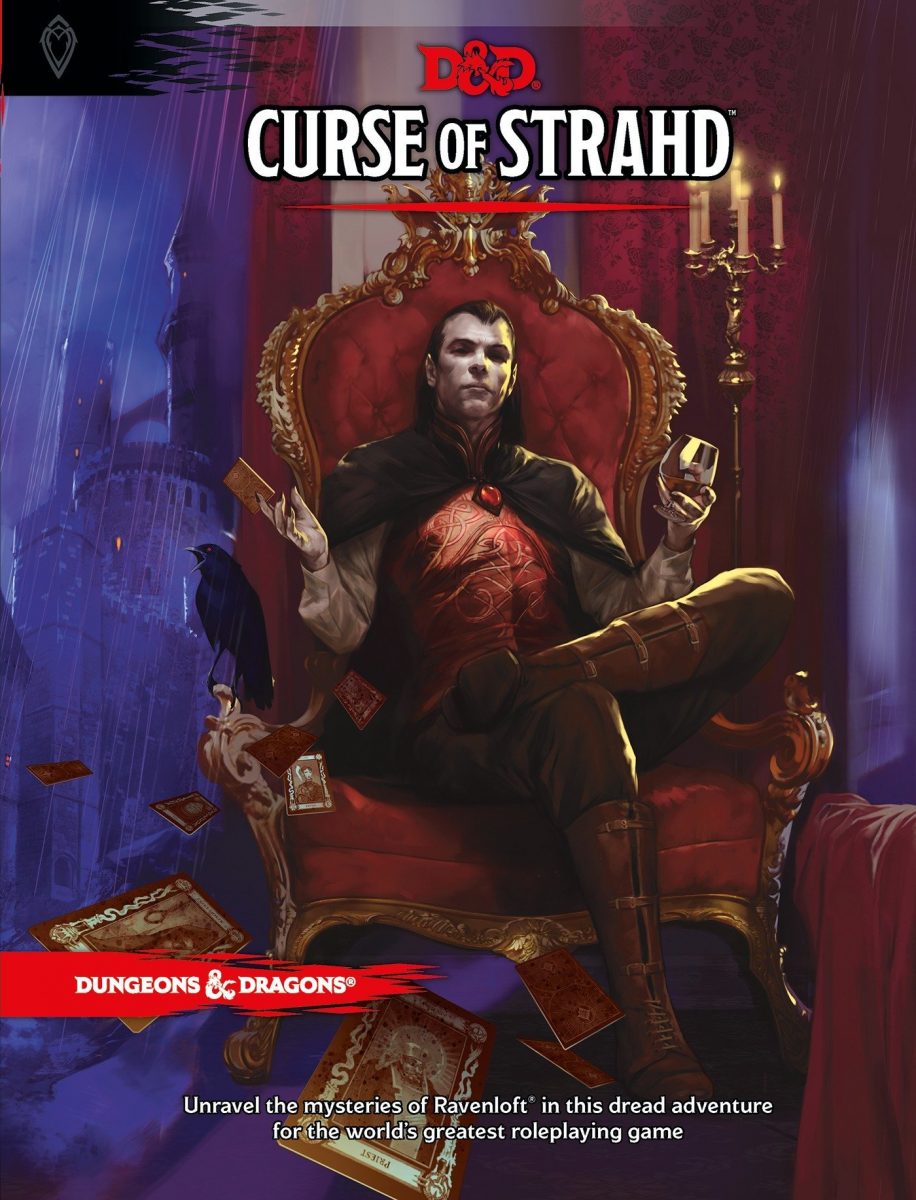
Levels: 1 – 10
Genre(s): Gothic Horror
Year Published: 2016
Ask anyone who’s played D&D 5e before and chances are they might have at least heard of Curse of Strahd in passing. For years, this adventure has remained king of D&D 5e adventures ever since its publication back in 2016, and for good reason.
For starters, this adventure is actually a remake and expansion of the original I6: Ravenloft adventure by Laura and Tracy Hickman back in 1983, which in and of itself should be enticing enough for veteran D&D players to give it a shot if they haven’t already. For the uninitiated, Curse of Strahd transports adventurers into the grim and dour land of Barovia. In it, they are made prisoners by its dark lord and master, the vampire known as Strahd von Zarovich. To leave, they have but one objective: defeat Strahd and end his curse upon the land. However, it isn’t as straightforward as it seems, as they have to tread carefully across Barovia to accumulate strength and power in order to do so. And Strahd, being the all-powerful presence of this land, will use everything in his arsenal to prevent adventurers from doing so.
By and large, the story of Curse of Strahd is the most intense and engaging out of all of this list. It sets the gothic horror tone and atmosphere of the campaign really well, and from the onset puts players in a position of absolute weakness as they are thrust out of their comfort zone by being put involuntarily into Barovia. It slowly ramps up in intensity as players trudge through the land, avoiding scores of undead and minions of Strahd, and meeting (mostly unfriendly) NPCs along the way. The allies that they do make, however, while few and far between, offer a nice sense of relief and contrast to the often grim and dreadful atmosphere that Barovia presents. It then culminates in a grueling set piece with Strahd in his lair, the iconic Castle Ravenloft, in a predetermined location set by a deck of cards known as the Tarokka Deck.
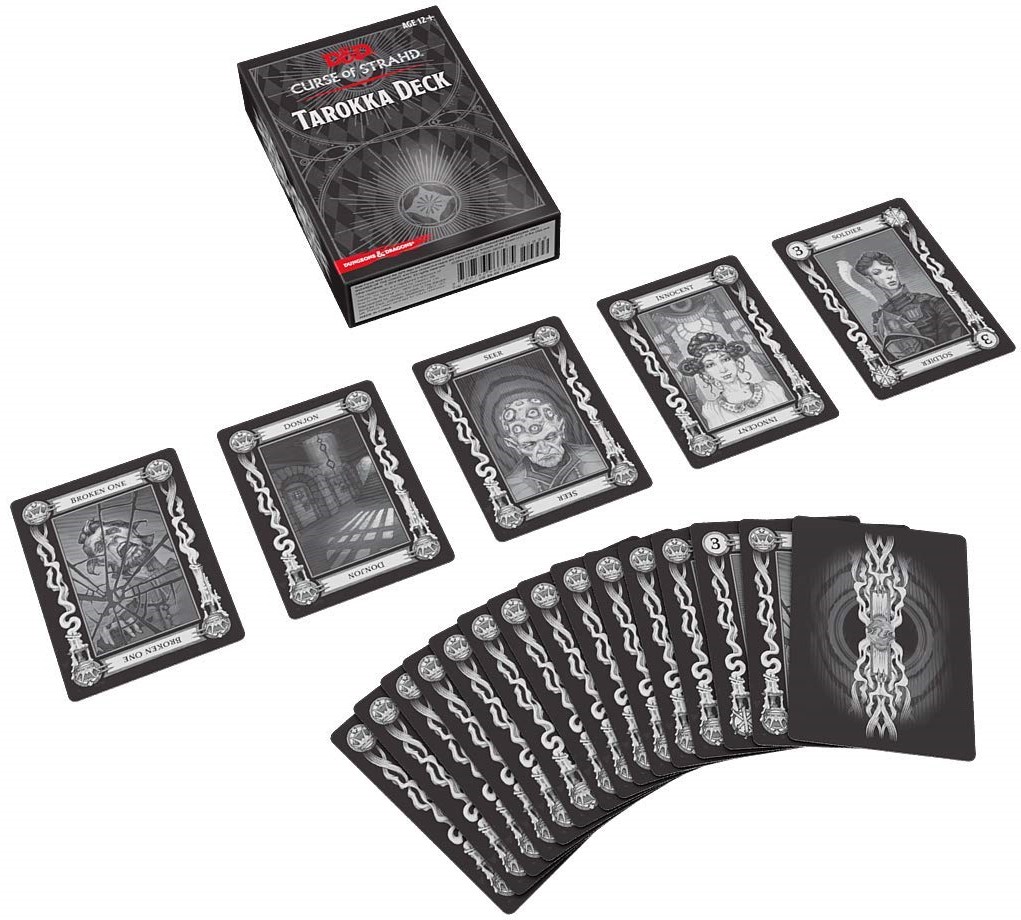
Speaking of which, one of the most striking features of this campaign is also the inclusion of the Tarokka Deck. The DM uses this deck at a certain point during the adventure, and the contents of this deck, coupled with a certain section in the book, is the reason why Curse of Strahd has such a flexible narrative structure. A simple shuffle of the deck can result in wildly different allied NPCs, locations to discover, and the final encounter with Strahd. This ensures that no two games of Curse of Strahd are the same, though the overall plot and resolution remains the same. While the Tarokka Deck is included in the book as a cutout, it is also sold separately, if you prefer not to damage your precious book. Otherwise, you can easily use a deck of regular playing cards for this.
Despite being the perfect story in our books, Curse of Strahd is not exactly the perfect adventure book. The biggest hurdle here is, again, formatting.It sorely lacks an adventure flowchart for the benefit of visual learners, as well as a dramatis personae for those that struggle to pronounce the plethora of Russian-style names — both of which were only started with Storm King’s Thunder, which came out just a few months after this one. Well, these are things that a little bookmarking and sticky-note-sticking can’t fix, if you don’t mind “messing up” your book in that sense. Additionally, it might be a bit more on the complex side for newer DMs to sink their teeth into, as it requires the DM to be five steps ahead of their players by stepping into the shoes of a morally-complex and ancient being such as Strahd. It demands the DM to really ham up the atmosphere of the campaign, otherwise it can easily fall flat on its face in terms of tone and atmosphere.
But if the entire group is up to the challenge, Curse of Strahd’s superb overall quality will show exactly why it remains the adventure to beat after 5th edition’s 6 years of existence and counting.
A few lists to help you out with your campaign pitch
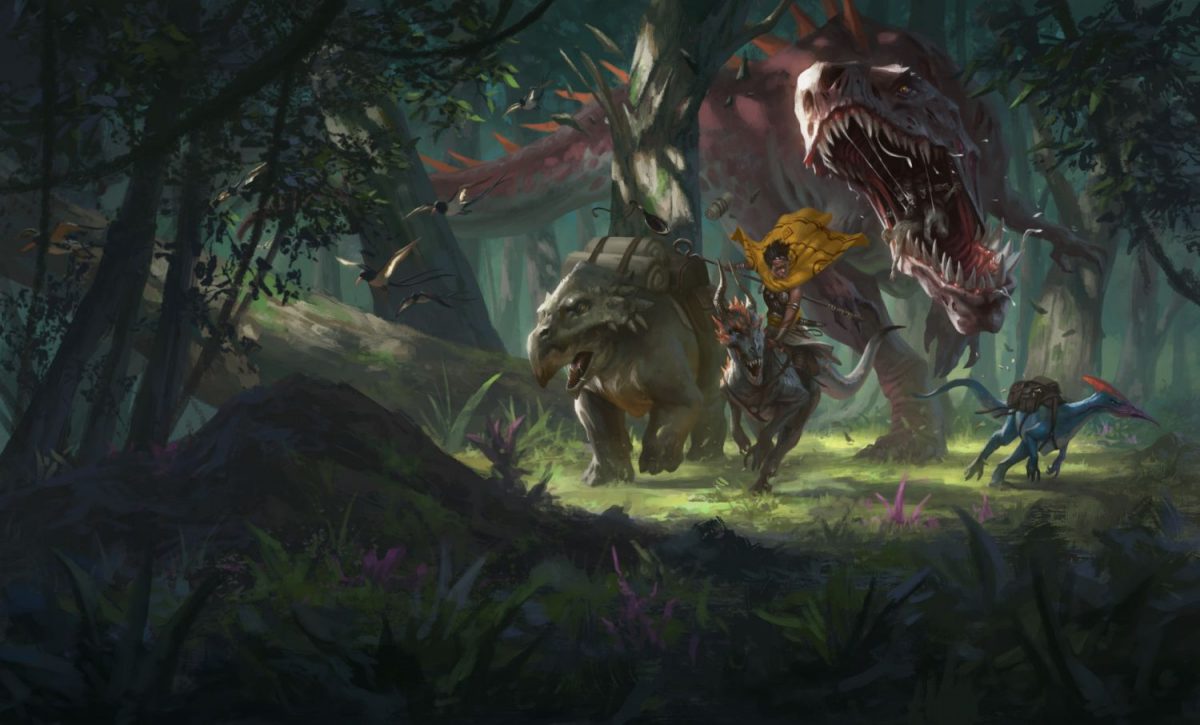
For brand-new groups
For the non-fussers
For groups that want a good story (and/or just want to roleplay their hearts out)
For groups that just want to wind down after a long, hard week by busting down doors and venting their frustrations on monsters
For groups that crave a challenge
- Out of the Abyss
- Tomb of Annihilation
- Waterdeep: Dungeon of the Mad Mage
- Icewind Dale: Rime of the Frostmaiden
For groups that want to play D&D but are tired of classic fantasy
- Curse of Strahd
- Out of the Abyss
- Baldur’s Gate: Descent into Avernus
- Icewind Dale: Rime of the Frostmaiden
Marion has a serious RPG addiction. Sometimes it bleeds into real life; he forgets to sleep because he thinks he has a Witcher’s body clock. Forgive him in advance if he suddenly blurts out terms such as “Mind Flayer” and “Magic Missile”, because never once does he stop thinking about his next Dungeons & Dragons game.

